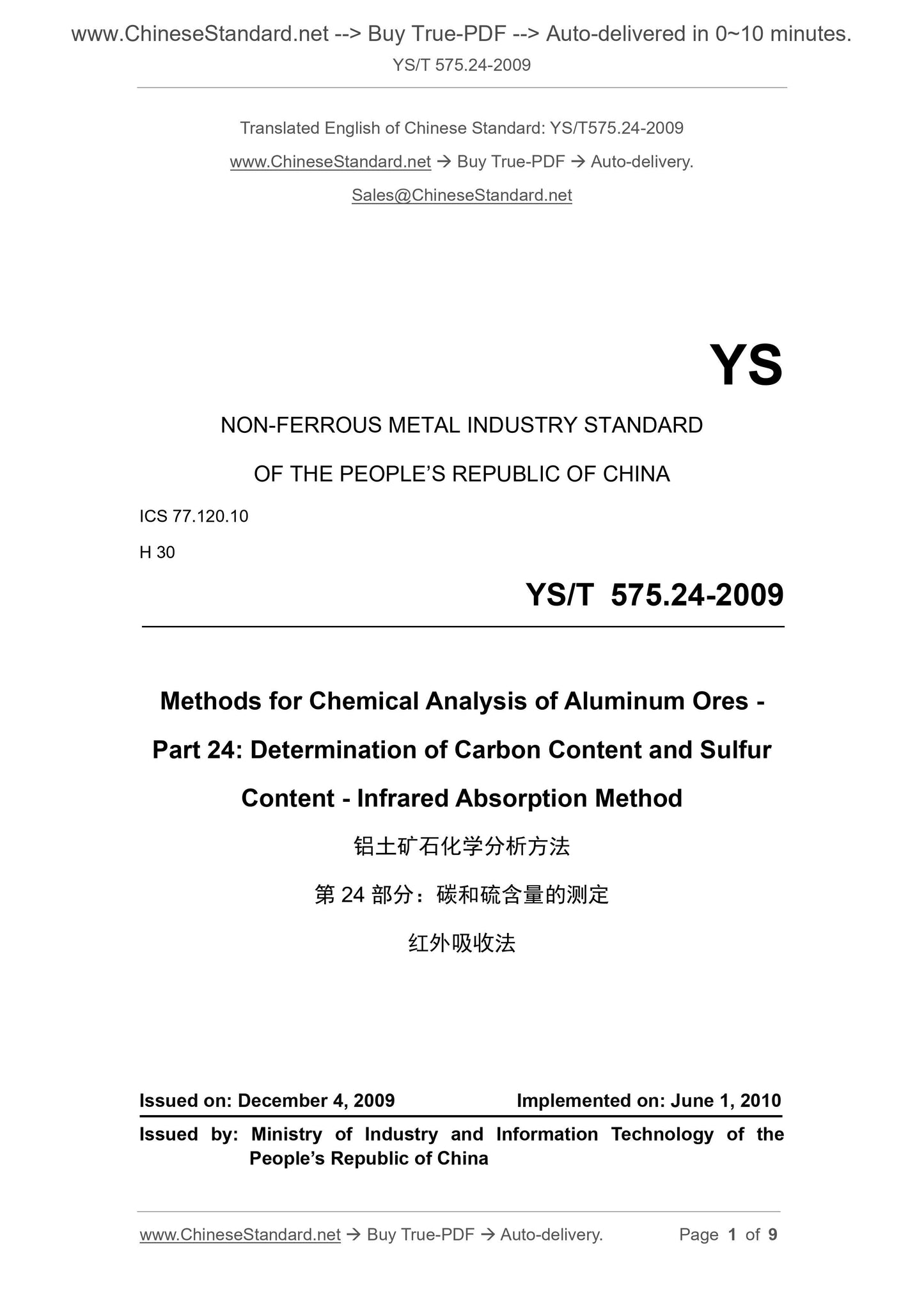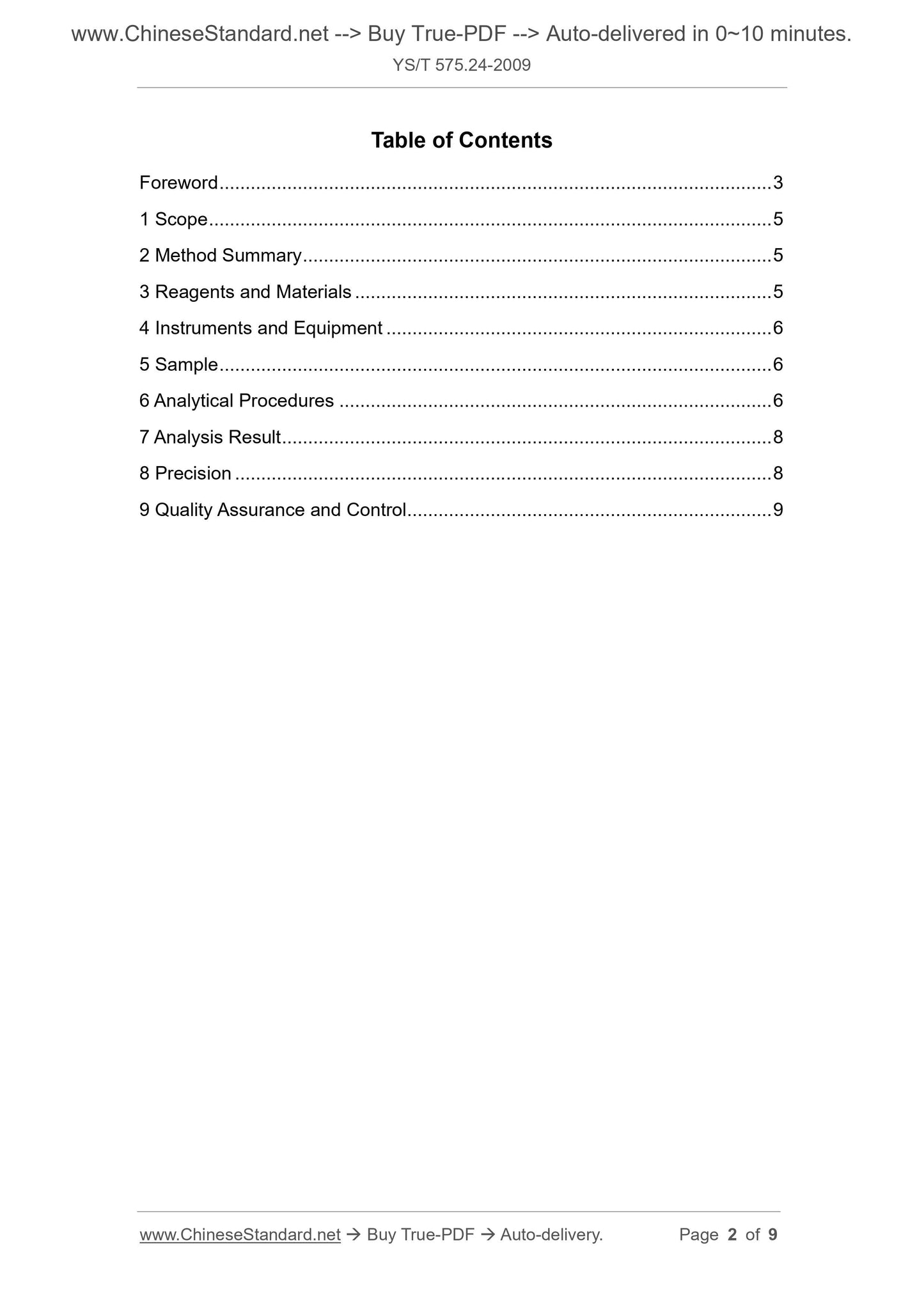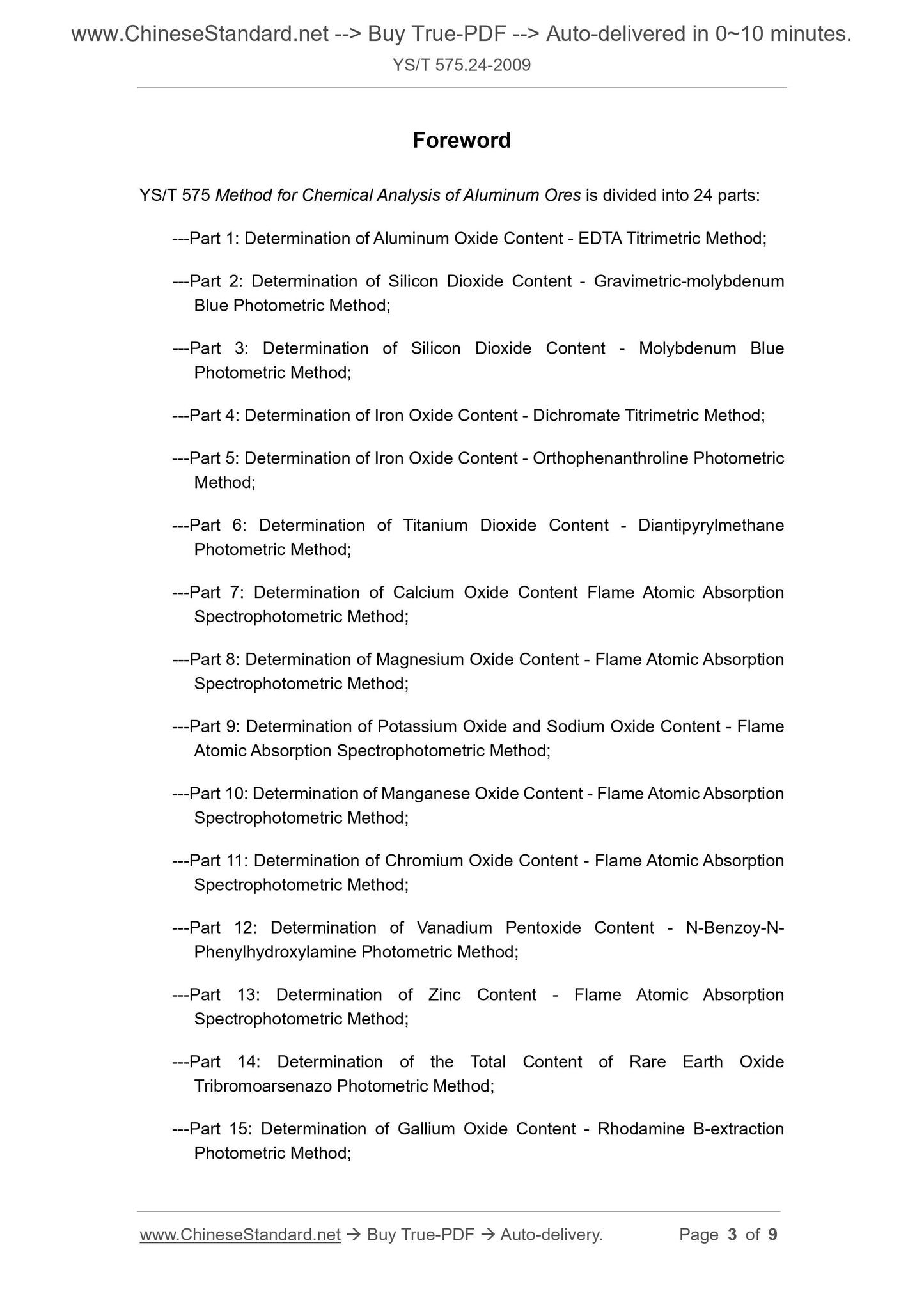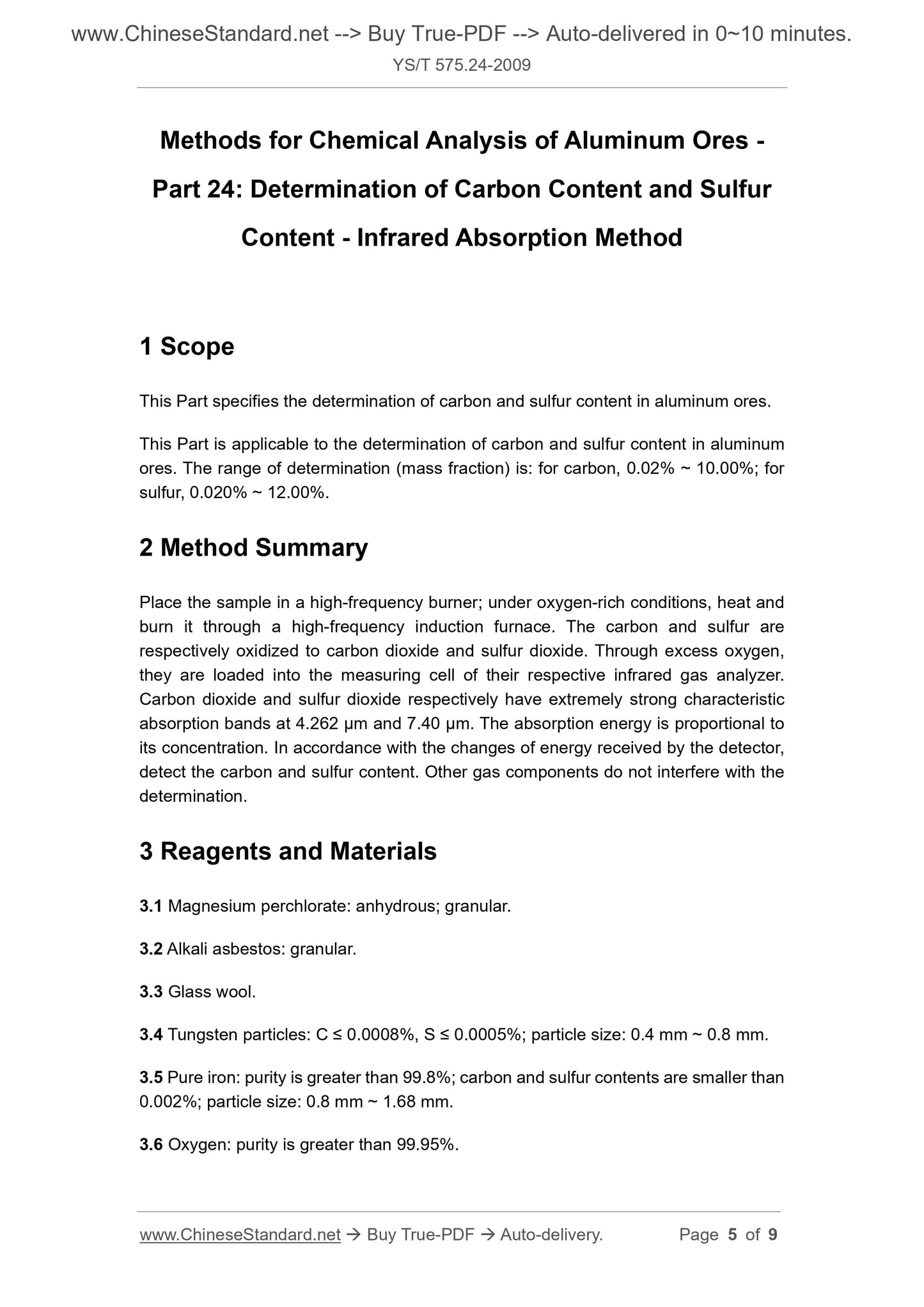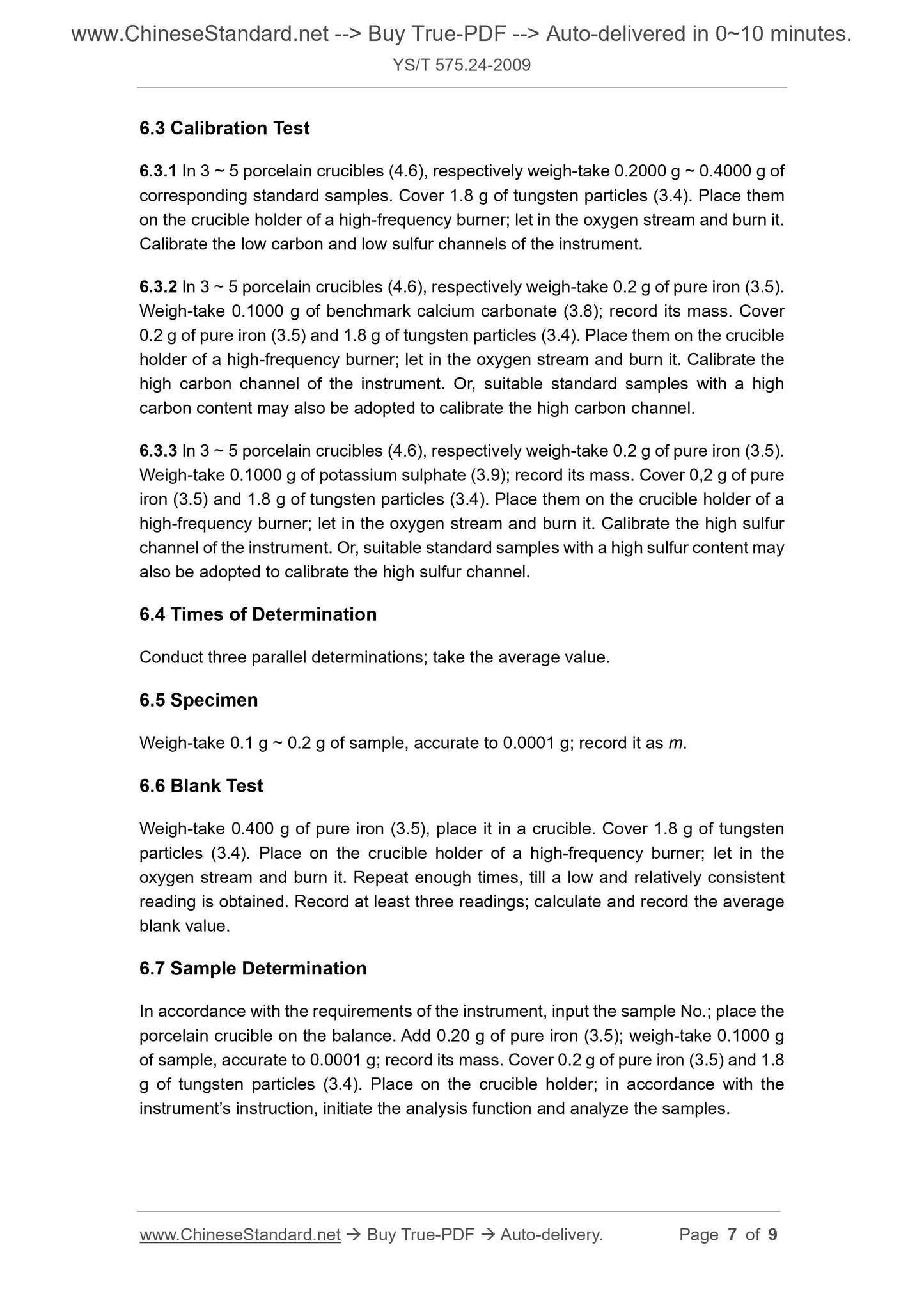1
/
of
5
www.ChineseStandard.us -- Field Test Asia Pte. Ltd.
YS/T 575.24-2009 English PDF (YS/T575.24-2009)
YS/T 575.24-2009 English PDF (YS/T575.24-2009)
Regular price
$150.00
Regular price
Sale price
$150.00
Unit price
/
per
Shipping calculated at checkout.
Couldn't load pickup availability
YS/T 575.24-2009: Methods for chemical analysis of aluminum ores. Part 24: Determination of carbon content and sulfur content. Infrared absorption method
Delivery: 9 seconds. Download (and Email) true-PDF + Invoice.Get Quotation: Click YS/T 575.24-2009 (Self-service in 1-minute)
Newer / historical versions: YS/T 575.24-2009
Preview True-PDF
Scope
This Part specifies the determination of carbon and sulfur content in aluminum ores.This Part is applicable to the determination of carbon and sulfur content in aluminum
ores. The range of determination (mass fraction) is: for carbon, 0.02% ~ 10.00%; for
sulfur, 0.020% ~ 12.00%.
Basic Data
| Standard ID | YS/T 575.24-2009 (YS/T575.24-2009) |
| Description (Translated English) | Methods for chemical analysis of aluminum ores. Part 24: Determination of carbon content and sulfur content. Infrared absorption method |
| Sector / Industry | Nonferrous Metallurgy Industry Standard (Recommended) |
| Classification of Chinese Standard | H30 |
| Classification of International Standard | 77.120.10 |
| Word Count Estimation | 6,682 |
| Date of Issue | 2009-12-04 |
| Date of Implementation | 2010-06-01 |
| Adopted Standard | ISO 15350-2000, NEQ |
| Regulation (derived from) | MIIT [2009] No. 66 |
| Issuing agency(ies) | Ministry of Industry and Information Technology |
| Summary | This standard provides for bauxite Determination of carbon and sulfur. This standard applies to bauxite Determination of carbon and sulfur. Measuring range (mass fraction): carbon 0. 02% to 10. 00%, sulfur is 0. 020% ~ 12. 00%. |
Share
